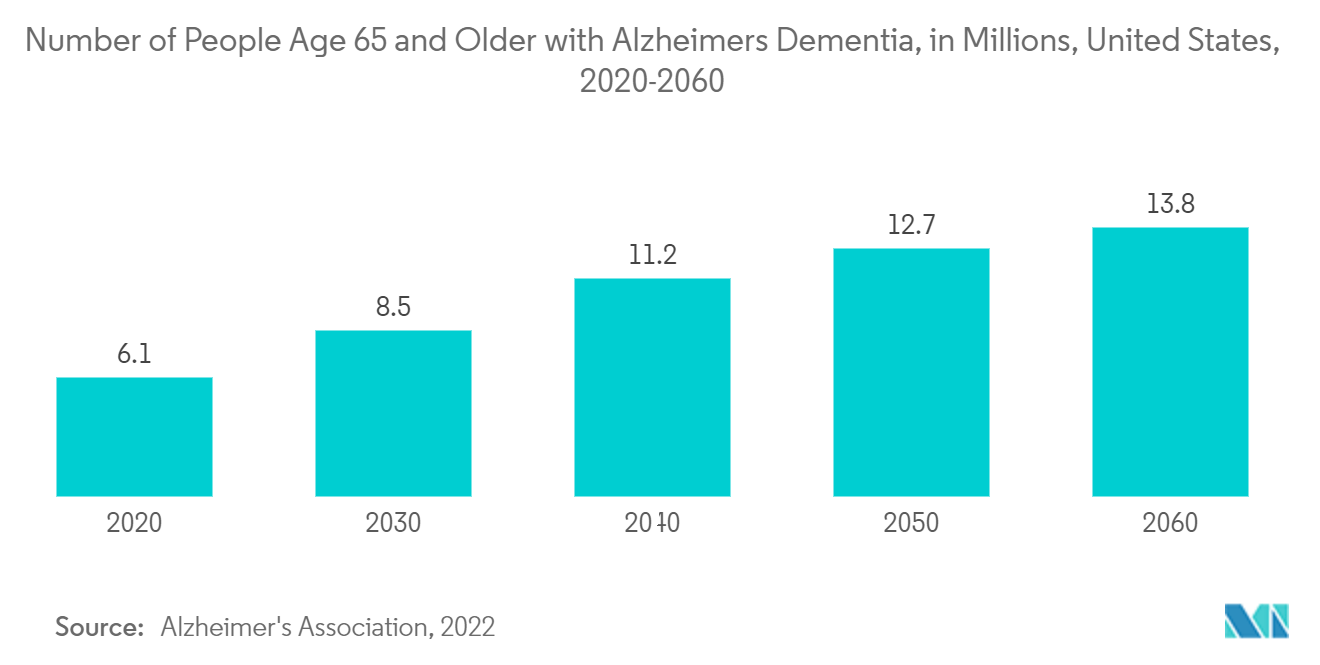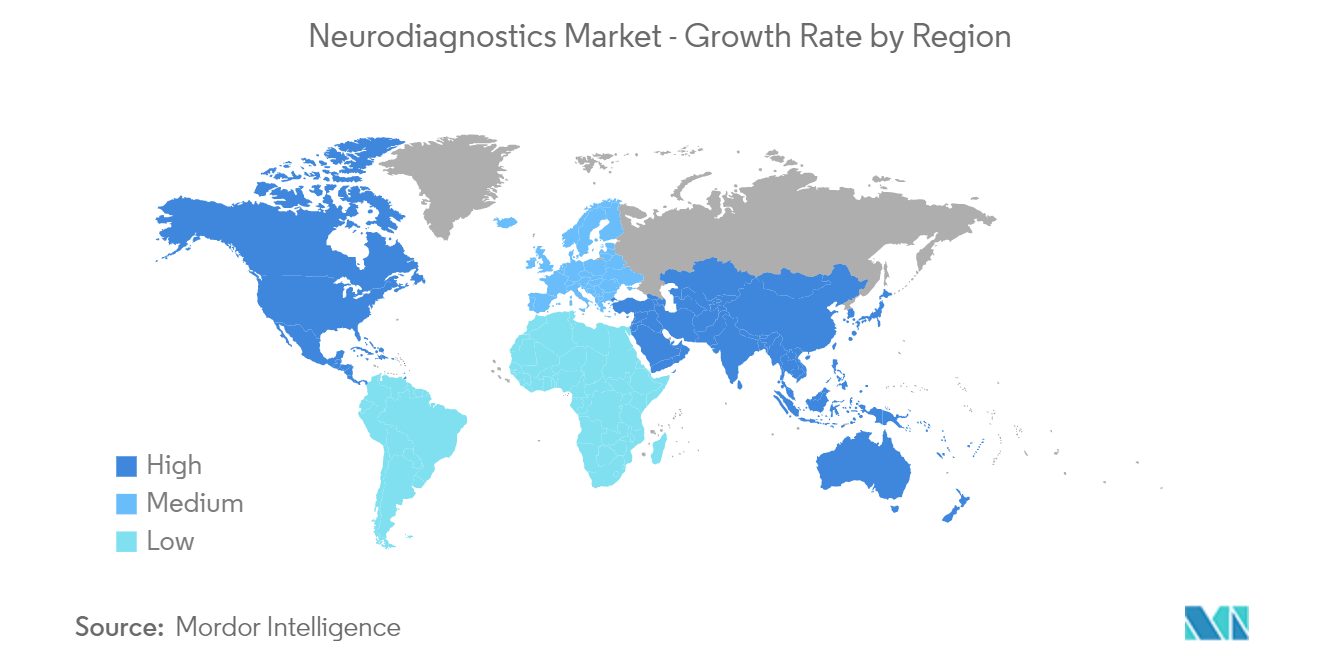Market Trends of Global Neurodiagnostics Industry
This section covers the major market trends shaping the Neurodiagnostics Market according to our research experts:
Diagnostic and Imaging Systems Segment is Expected to Hold a Major Market Share
The major factors propelling the growth of the diagnostic and imaging segment include the rising prevalence of neurological disorders, increasing adoption of advanced technologies in medical imaging, and the rising geriatric population.
The increasing burden of neurological disorders among people is increasing the demand for neurodiagnostic devices, which further increases the market growth over the forecast period. For instance, according to a paper published by the Public Health Foundation of India in July 2021, titled " Burden of Neurological disorders in India", the prevalence of non-communicable neurological illnesses is rising in India, owing to the country's aging population. In addition, in India, stroke, headache problems, and epilepsy are the primary causes of neurological illnesses. As per the same source, stroke resulted in the deaths of 699,000 people in 2019, accounting for 7.4% of all deaths in India.
New therapeutic and diagnostic models are being developed that deliver precise results, aid in early disease detection, and reduce the cost of treating various diseases. With the increasing disposable income, people are becoming capable enough to have access to imaging procedures for the early detection of diseases.
Moreover, the increasing company focus on developing innovative imaging and diagnostic products for better and early detection are also contributing to the growth of the market. For instance, in November 2021, Philips launched a new Artificial intelligence-enabled Magnetic Resonance portfolio at the Radiological Society of North America (RSNA) annual meeting in Chicago. Similarly, in March 2021, Hitachi Medical Systems launched two new permanent open MRI systems that are equipped with the SynergyDrive workflow solution at the start of the 2021 European Congress of Radiology. In August 2020, GE Healthcare showcased its three new technologies, SIGNA 7.0T, SIGNA UHP 3.0T, and MAGNUS, to enable neuro research to better understand Alzheimer's disease and traumatic brain injury as well as accelerate clinical translation.
Thus, the increasing prevalence of neurological diseases and the company's focus on developing well-advanced diagnostic and imaging systems are likely to increase the market growth.

North America is Expected to Hold a Significant Share in the Market and Expected to do Same in the Forecast Period
North America is expected to hold a major market share in the global neurodiagnostic market due to the increasing prevalence of neurological disorders, rising geriatric population, presence of robust healthcare infrastructure, high healthcare spending, and presence of major market players continuously evolving and launching advanced diagnostics devices in the region.
The rising prevalence of neurological diseases is the key factor driving the growth of the market in the region. For instance, in June 2021, in an interview, the Chief Science Officer of the Alzheimer Society of Canada stated that 'Over the next 10 years, it was anticipated that more than one million people in Canada will be living with dementia.' This indicates that the increasing prevalence of Alzheimer's in the North American region is expected to increase the demand for diagnostic and imaging systems, which may further drive the market growth over the forecast period. Similarly, according to the data published by the Parkinson's Foundation, in 2021, an estimated 9,30,000 people were living with Parkinson's disease in the United States 2020, and this number is predicted to increase to 1,2 million by 2030.
Also, the growing geriatric population in the region is expected to increase the burden of neurological disorders, as the geriatric population is more prone to neurodegenerative diseases like Alzheimer's and Parkinson's, age-associated diseases. For instance, according to the March 2021 report of the Alzheimer's Association, approximately 6.2 million people of age 65 years and more are living with Alzheimer's-related dementia in the United States, and it is projected that this number will increase to 13.8 people by 2060.
Moreover, the increasing diagnostic product launches in the region are also contributing to the growth of the market over the forecast period. For instance, In December 2021, Fujifilm Healthcare Americas Corporation presented an advanced high-field open MRI system, Velocity MRI System, at the Radiological Society of North America (RSNA) conference in Chicago.
Hence, the increasing geriatric population, rising burden of neurological disease, and increased product launches are likely to increase the market expansion over the forecast period.


